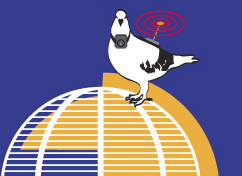“The Great Kahn contemplates an empire covered with cities that weigh upon the earth and upon mankind, crammed with wealth and traffic, overladen with ornaments and offices, complicated with mechanisms and hierarchies, swollen, tense, ponderous. ‘The empire is being crushed by its own weight’ Kublai thinks, and in his dreams, cities as lightas kites appear, pierced like laces, cities transparent as mosquito netting, cities like leaves’ veins, cities lined like a hand’s palm, filigree cities to be seen through their opaque and fictitious thickness”
Italo Calvino, Invisible Cities The city has always been a site of transformation: of lives, of populations, even of civilizations. With the rise of the mega city, however; with the advent of 24 x 7 rush hours; with the inexorable conversion of public space into commercial space; with the rise of surveillance; with the computer-assisted precision of redlining; with the viral advance of the xenophobic, the contemporary city is weighted down. We dream of something more. Not some something planned and canned, like another confectionary spectacle. Something that can respond to our dreams. Something that will transform with us, not just perform change on us, like an operation. The Interactive City theme seeks urban-scale projects for which the city is not merel a palimpsest of our desires but an active participant in their formation. From dynamic architectural skins to composite sky portraits to walking in someone else’s shoes to geocaches of urban lore to cybrid games with a global audience, projects for Interactive City should transform the “new” technologies of mobile and pervasive computing, ubiquitous networks, and locative media into experiences that matter. There is an invisible city growing among the growth of the megacity, and it is the electromagnetic, hertzian spectrum that flows ceaselessly with data about and from and between us, but which is always activated by the interfaces of commerce and government—cell phones, surveillance cameras, marketing databases, navigation systems that will alert us to a nearby sale. We imagine the city itself as an interface, which accesses the future, the past, the distant, the present, the communal, the individual in marvelous ways that allow us to enjoy the “opaque and fictitious thickness” of an invisible city made visible. There have been many exhibitions about the city, notably Hans-Ulrich Obrist and Hou Hanrou’s Cities on the Move, but none have treated the city itself as the “medium.” As Obrist noted “Cities on the Move developed through happenstance. The exhibition can be seen as a network. A previous speaker spoke of links to neurology. I draw the analogy again because of a very strong emphasis within the exhibition was placed on the idea of the city involving positive feedback-loops. This metaphor can be extended to the role of positive feedback-loops in learning that the exhibition as a city becomes a kind of learning system.” Projects for Interactive City expand the feedback loop into and through the city itself. View the Interactive City artworks.
|
